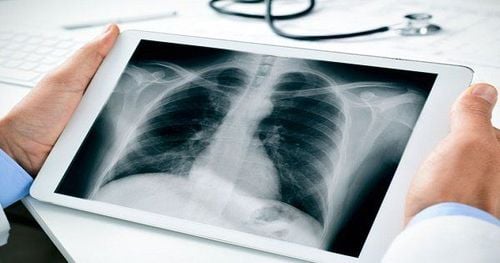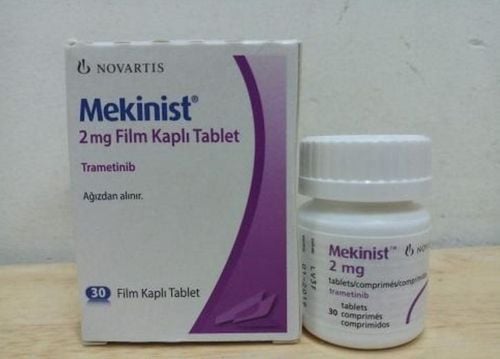This is an automatically translated article.
Asbestos lung dust is an occupational disease caused by frequent exposure to asbestos. Asbestos pneumonitis is a disease that seriously affects health and increases the risk of lung cancer.
1. Overview of asbestosis
Asbestospneumonia is a disease that causes lung fibrosis, pleural damage due to frequent exposure and inhalation of asbestos fibers - a compound widely used in the materials industry because of its heat, acid, and anti-inflammatory properties. fire, sound insulation, high electrical insulation. Therefore, this is an occupational disease, appearing about 5 - 20 years after exposure to pathogenic chemicals.

Xơ hóa phổi là tình trạng trẻ phải tiếp xúc với sợ amiăng
2. Who is at risk of occupational asbestosis?
Workers in the following occupations or occupations have a high risk of occupational asbestosis such as:
Manufacture of construction materials including asbestos roofing Mining, drilling, dams , digging asbestos rock ores Perform dry operations such as pulverizing, crushing and sieving asbestos rock ores. Perform combing, pulling, weaving of asbestos fibers Construction and dismantling of asbestos-containing works Manufacture of asbestos cement Manufacture of asbestos articles
3. Symptoms of asbestosis
After about 10 - 20 years of exposure to pathogenic chemicals, or in the case of high exposure, after 5 - 10 years, asbestosis causes the following symptoms:
Shortness of breath or when breathing is laborious, wheeze. Chest pain. Cough a lot, dry cough, can cough with sputum, cough up blood.
4. Diagnosis, treatment and prevention of asbestosis
4.1 Diagnosis of asbestosis
To diagnose asbestosis, doctors rely on the following factors:
History of exposure to chemicals that cause disease Symptoms of the disease: Based on symptoms to assess the extent of the disease. Chest X-ray: Chest X-ray image shows asbestosis causing fibrosis of lung parenchyma with fuzzy, fibrous nodules s, t, tumor. In addition, the pleura can also be seen with calcified pleura, thickened pleura... High resolution computed tomography: The image results show some abnormalities such as pleural opacity, parenchymal parenchyma. raw lung, fibrosis, pleural calcification, honeycomb lung. These abnormalities are detected with high-resolution computed tomography although the X-ray imaging results may still be normal. Pulmonary function assessment: Pulmonary ventilation may be normal or have signs of pulmonary embolism. Other techniques help identify asbestosis present in sputum, alveolar fluid, bronchi or biopsies of obstruction, supporting pulmonary syndrome.

X-quang là phương pháp chẩn đoán bệnh bụi phổi amiang phổ biến
4.2 Treatment of asbestosis
So far, asbestosis has not had a radical treatment because the lungs have been damaged, and it is impossible to fully restore function. Therefore, patients are mainly treated to relieve symptoms of the disease such as breathing exercises, oxygen, ... and treatment of complications caused by the disease such as impaired respiratory function, weekly function complete.
To avoid causing more serious complications, patients need to quit smoking, limit exposure to disease-causing chemicals, monitor and examine for timely detection of disease so that they can be treated in case of infection.
5. Complications of asbestosis
Asbestos pneumonitis progresses slowly and the damage to the lungs caused by the disease will develop into complications such as:
Damage and impaired function of the respiratory system such as: bronchiectasis, bronchitis, pleural effusion, pleural thickening, pleural calcification, atelectasis, pulmonary tuberculosis, increased risk of pleural, peritoneal cancer. Increased risk of lung cancer: Asbestos patients who smoke have a higher risk of lung cancer. Hematopoietic circulatory dysfunction such as myeloma, lymphoblastic leukemia, lymphoblastic tumor,... Asbestos pneumonitis cannot be treated completely, therefore, when detecting the disease, it is necessary to limit exposure. with disease-causing substances, and at the same time have a healthy lifestyle. If you notice any unusual symptoms, you should see a doctor immediately.
To register for examination and treatment at Vinmec International General Hospital, you can contact Vinmec Health System nationwide, or register online HERE.
MORE:
Complications of pulmonary embolism How do I know if I have pulmonary tuberculosis? Coughing up blood can warn of what disease?













